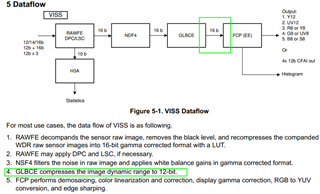24bit -> 12bit , it will result in the loss of half of the dynamic range of the image. We need help to reach the dynamic range of 120dB.
-
Ask a related question
What is a related question?A related question is a question created from another question. When the related question is created, it will be automatically linked to the original question.


